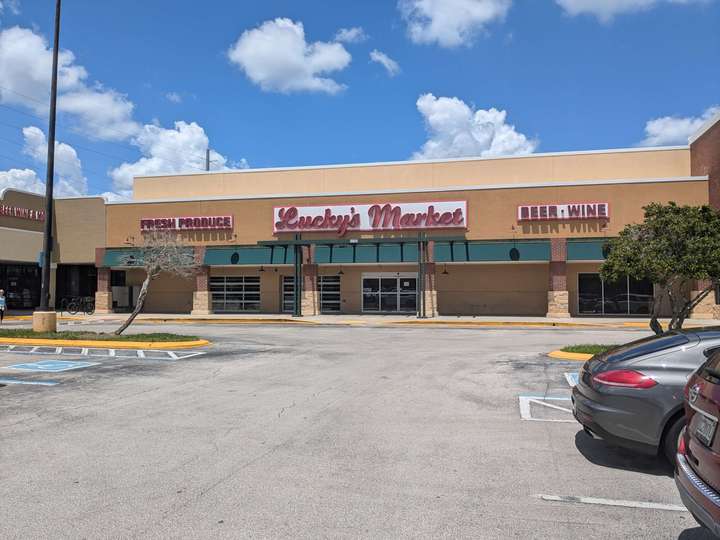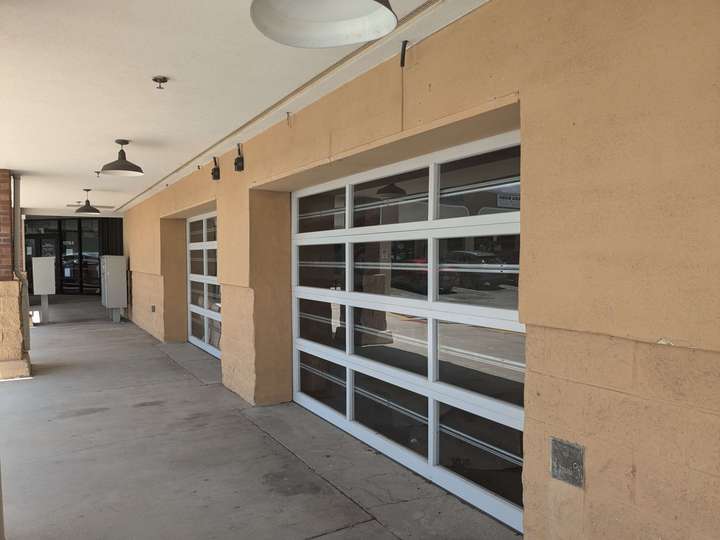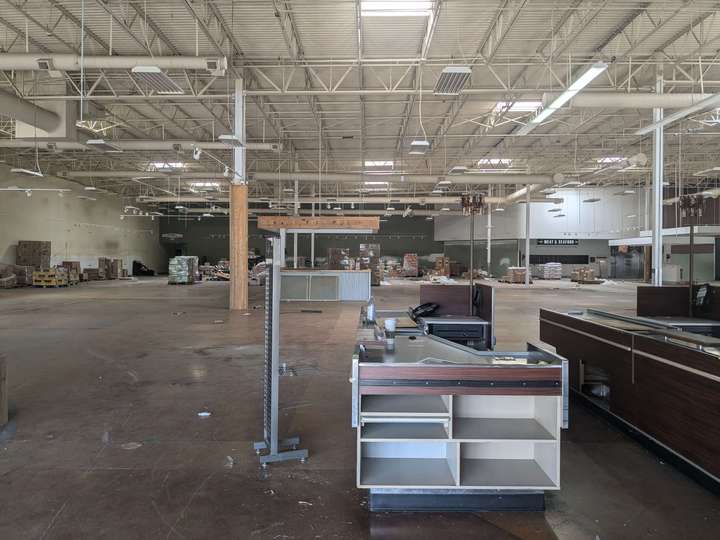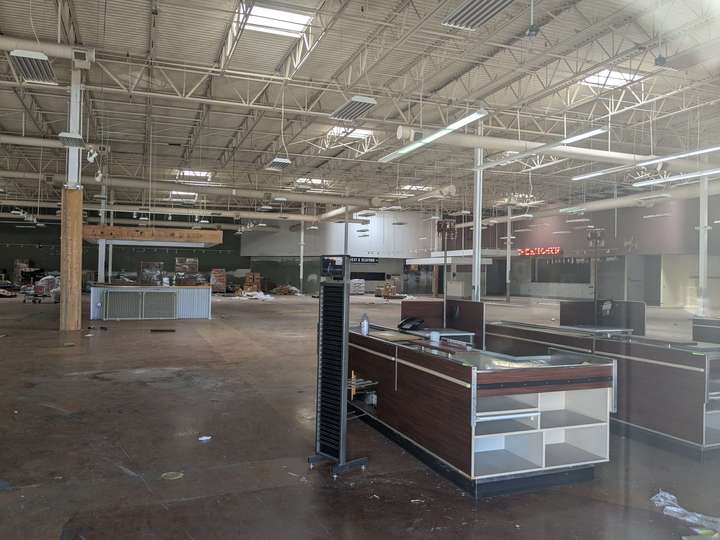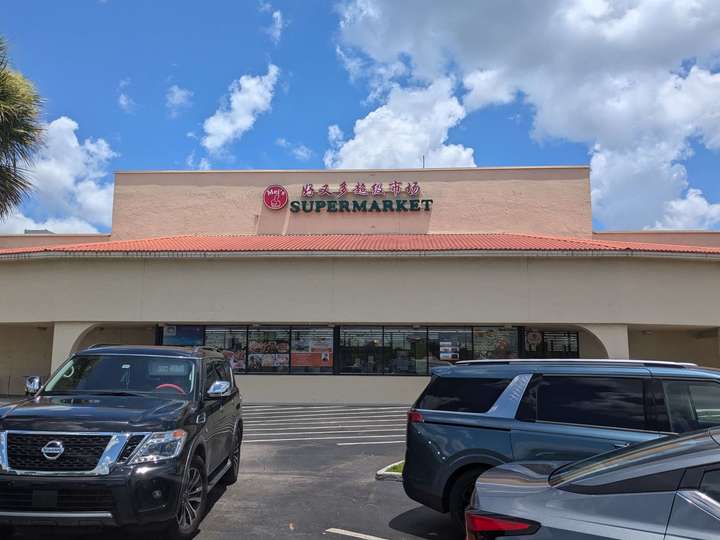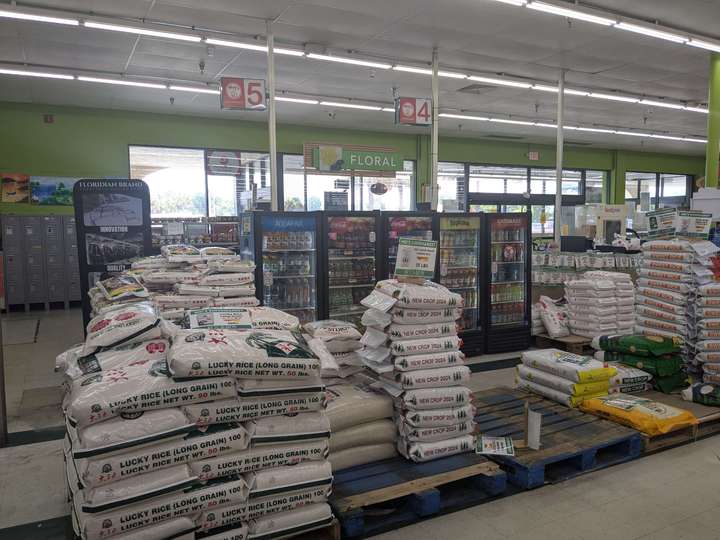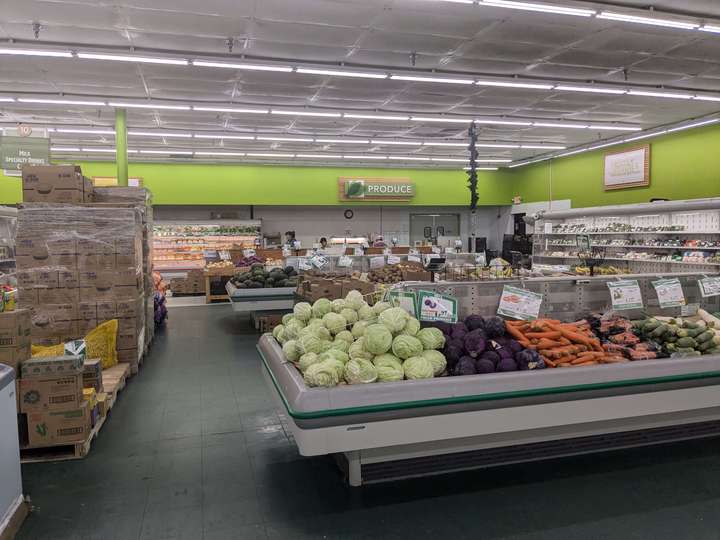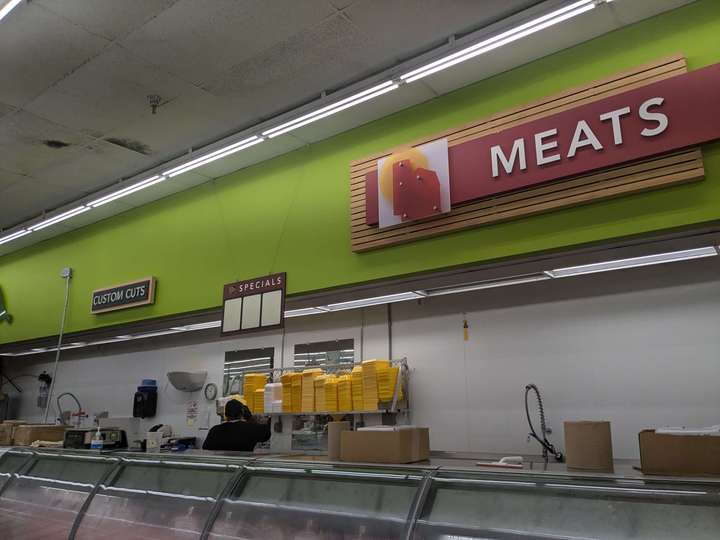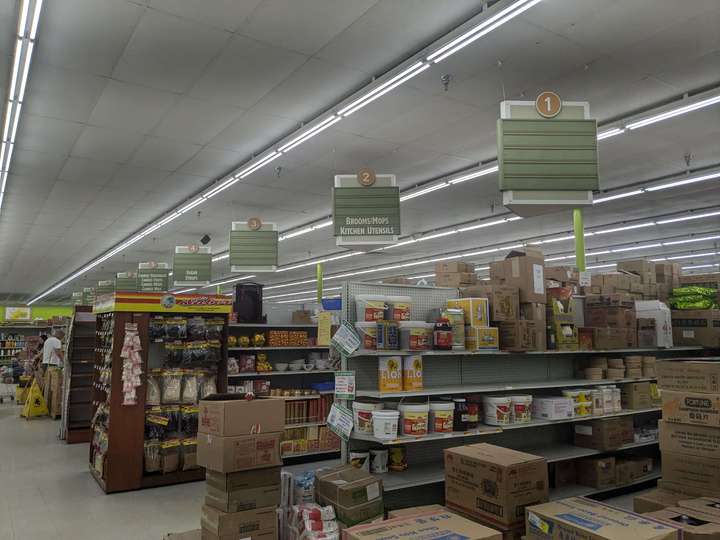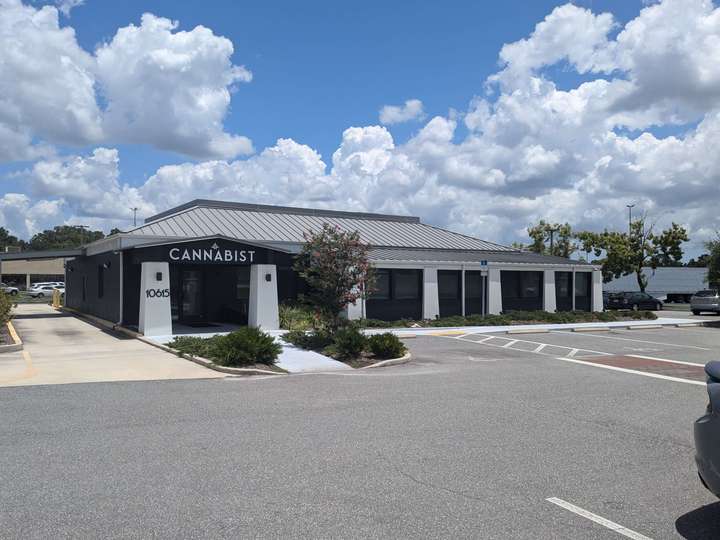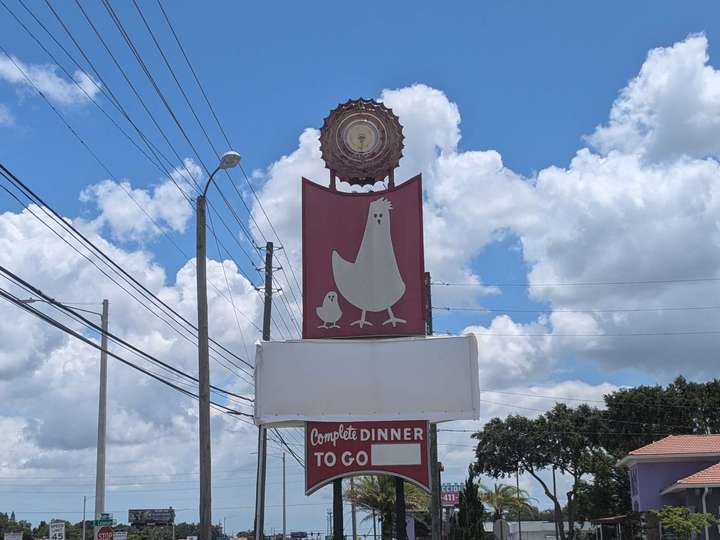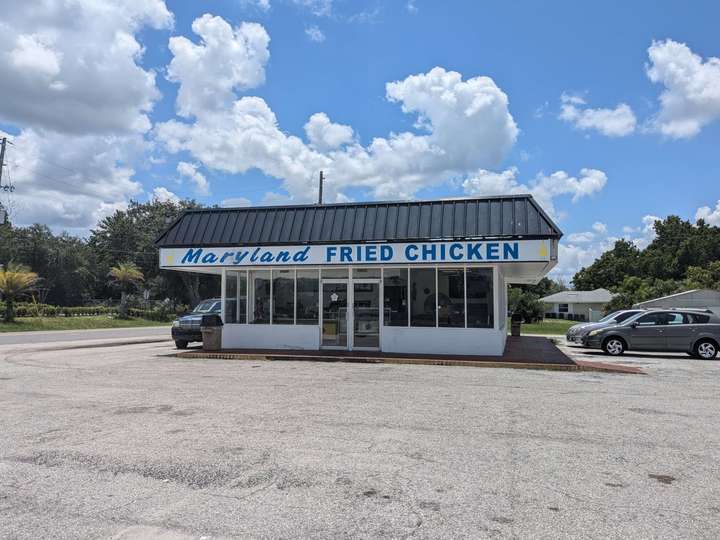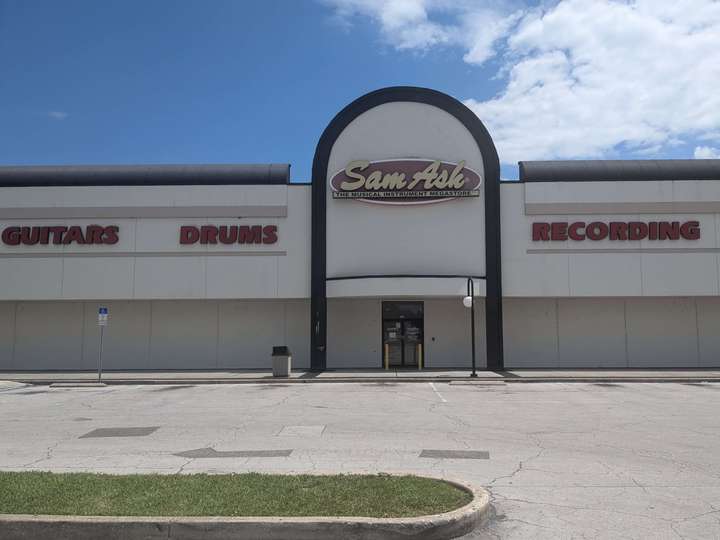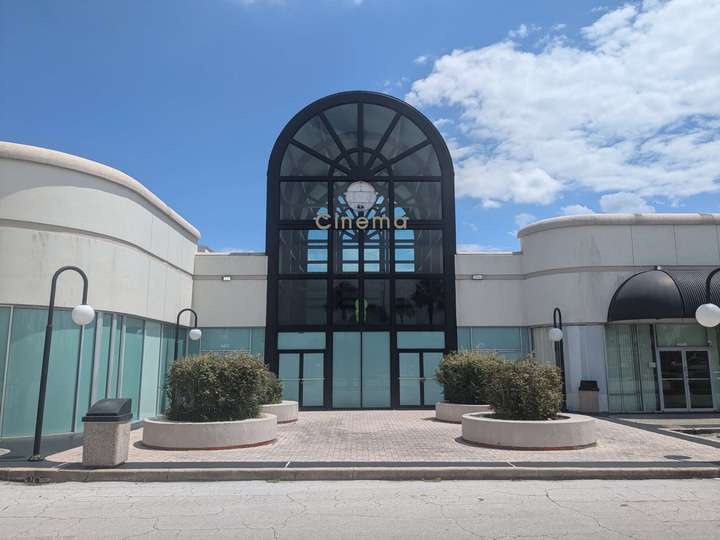Suburban Archaeology in North Orlando
So far on this blog, I've published mostly traditional architecture content. While I've grown to love the humble downtown brick box and all it's bretheren, I also have a love for the humble field of suburban architecture. As suburban sprawl fans out across innumerable acres of swamp, it leaves in it's wake decades worth of suburban trends, some familiar, some forgotten, fossilizing as the baby boomer suburbs of yesteryear are left behind for ever newer developments on the fringes.
This is a topic I'll be revisiting over and over again- 'Suburban Archaeology' is decent enough I may keep it as a series title. Today we'll start in North Orlando, heading west into town along Route 50 (Colonial Dr) to visit a few places of interest.
We'll start in the Alafaya Village Shopping Center, located squarely between the upper-middle class Waterford Lakes Shopping Center and the University of Central Florida. A location like that sounds like a recipe for success, but this plaza's anchor space has been a revolving door of tenants- with the original Albertsons[1] lasting only 8 years before converting to the chain's discount format that managed to not last even a full year. After that came a a borderline unfinished and unsafe gym that ended in eviction, finally giving way to a seemingly decent tenant- middle class luxury grocer Lucky's Market[2]- in 2016.

The Kroger-bankrolled boom of Lucky's Market in Florida, followed by it's swift collapse when the bigger chain's money abruptly disappeared is worthy of a whole blog post by itself, and yet is only one chapter of the Southern grocery giant's careening, unstable track record in the Sunshine State. What's relevant for today is what it left behind- a number of highly appointed supermarkets with unclear successors scattered across the state.
This store is kind of akwardly shoved into the corner of the shopping center, which might explain it's continued vacancy after Lucky's departure. While it was a full service grocer, Lucky's Market stores tended to be smaller than their traditional competitors, and so often had to subdivide when they recycled a space. The other half of this anchor pad was vacant for a while, but eventually became a medical center.
Visible through the dusty door glass is the mostly-gutted remains of the store's interior. The desireable and easily reused fixtures like shelving and coolers are long gone, no doubt populating mini marts and independent grocers across the state, but some elements- such as the bespoke juice bar island or the bulb-marquee Kitchen sign- were left behind to rot. Quite literally, in the case of the checkout lamps; in their quest for quirky design, the lamps were shaded by varieties of glass bottled drinks, in this case, Izze Sparkling Juice. Now at least four years out of date, these preservative-free hipster lampshades are basically a grenade bouquet of liquid filth (epilepsy warning), just waiting for those bottlecaps to fail.[3]
Our next stop goes just a hop skip and a jump down Route 50 into Union Park. Mei's Supermarket is an Asian grocer that shares the plaza with a Hispanic supermarket and a large bowling alley, and occupies a former Food Lion (originally Thriftway). While little remains from those days, remnants of other supermarkets are plentiful, namely the entire decor package, which has been lifted and readapted from a Publix. This decor is a mixture of what's known as 'Classy Market' 1.0 and 2.5, meaning it would have originally been installed in a Publix between 2004 and 2013, and presumably it was auctioned off when the store containing it closed or remodeled shortly before Mei's set up shop in 2021.
Outparcel to the plaza is this (medical) cannabis store, occupying a surprisingly well preserved Wag's restaurant, a long forgotten offshoot of Walgreens that ran Denny's/Shoney's style 24-hour restaurants for a brief time in the 1980s. There's also a vintage former shingle-roof Dunkin Donuts nearby, but it was too busy for me to get a photo.
Just down the street is a straggling outpost of Orlando's past- Maryland Fried Chicken. MFC has almost nothing to do with it's namesake state, and actually started in Orlando in the 1960s, spurred on by the founder noticing the growing popularity of KFC at the time, and wanting a piece of the pie. The 'Maryland' part of it's name is simply a dated marketing gimmick- at the time, the aerospace industry was beginning to bloom in Central Florida, and the original location served a number of engineers who had been brought in from Baltimore.
At it's peak, Maryland Fried Chicken reached as far north as Michigan, but by the 1970s the fried chicken market was contracting, and MFC began rapidly vanishing from the map. These days, I think there's about a dozen sprinkled across the eastern United States, primarily in the South, all largely unconnected from eachother except for the increasingly faded signs.
Let's talk about that sign, while we're here- what a looker it is! The middle panel has been blanked on this one, because they replaced the original "Maryland Fried Chicken" text with a URL- "MFC-UP.COM" that they then promptly didn't keep up. The rest is still very nice, however, from the sadly rusty and likely inoperable spiky beacon on top, to the simply designed chicken logo, to the "Complete Dinner To Go" text beneath[4]
As Route 50 swaps names to E Colonial Dr and we enter Northeast Orlando proper, we'll enter a real mixed bag of a retail area. The bustling stroad is a confounding mix of thriving big box stores and utter retail apocalypse, perhaps best exemplified by Colonial Plaza, a 1960s mall successfully redeveloped into a big box power center a mere 1300 feet away from the shambling, zombie like Orlando Fashion Square. That mall will be the subject of a future post, but for now, we'll stop in at Colonial Promenade across the street. Designed in 1982, the 194,000 sq ft center once boasted shops including General Cinemas, Linens and Things, Phar-Mor, and TJMaxx, but it seems like it wasn't meant to last.
Phar-Mor would exit in 1995, brought on by the company's infamous embezzelment scandal, and by 1998, a space formerly occupied by a Barnes & Noble had become a branch of the Orange County Public Library System. Now, while that's a great use for vacant retail space (and particularly fitting for a vacant bookstore), a library generally doesn't pay as much rent as a retailer would, so it's not a great sign they were accepting an offer like this. In 2000, General Cinemas collapsed and the theater would begin over a decade of trading between financially unstable budget operators until it's final closure circa 2015. The Herndon Branch Library would close permanently in 2020, citing it's isolation as the only tenant in their end of the center as a safety concern. Finally, Sam Ash, what I'd call the last legitimate major retailer, closed this year, as the entire company fell into bankruptcy.
Pictured above are the former Sam Ash- recently closed as of my visit- and the almost 9 years abandoned theater, still holding onto it's GCC-era "Cinemas" sign all these years later. I really love this center's design- the metal-framed glass arches, the PoMo streetlamps, the red tile accents around the bottoms of the planters... my only criticism is it's consistency- it's not very interesting to photograph outside the cinema, because it looks nearly identical across the whole center. As it sits now, the center is almost entirely vacant; the largest tenant is a discount furniture store, a chain, mind you, not a fly by night local store, but still not great as your headliner. A call center, vacuum store, and beauty store[5] round out the meager roster. The center is now owned by the Greater Orlando Aviation Authority, who have vague but as of yet undefined plans to develop it into housing, which I'm sure will emphasize the access to major roads and retail, and quietly downplay the active municipal airport immediately behind them.[6]
Thank you again for tuning into this episode of 'suburban archaeology'. I'll likely have more where this came from, with more insights into remnant signs, forgotten retailers, dead malls, and quirks of suburban planning.
[1] - The Albertsons Florida Blogger is a good friend of the author, and I invite you to explore his sites if you have a few spare hours and an affinity for supermarkets.
[2] - No relation to the Californian grocery chain with very nearly the same name and color scheme.
[3] - Anyone else remember that episode of Life After People with the abandoned grocery store?
[4] - The white box would have once displayed the price of such a meal.
[5] - I've seen several of these in centers that are otherwise nearly abandoned; are the margins on makeup that good?
[6] - early morning cessna go brzzzzzzzzzzzzzzzzzzzzzzz

